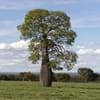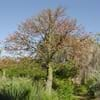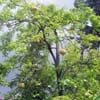Life Span
Biennial
Biennial
Origin
Mid-Atlantic United States, Southeastern United States, Central United States, South-Central United States
North America, United States, Northeastern United States, Mid-Atlantic United States, North-Central United States, Central United States, Canada
Types
Yellow Birch, Paper Birch, River Birch
Not Available
Number of Varieties
Not Available
Habitat
Hills, Moist Soils
Anthropogenic, Floodplains, Forests
USDA Hardiness Zone
4-9
3-9
Sunset Zone
1a, 1b, 2a, 2b, 3a, 3b, 4, 5, 6, 7, 8, 9, 10, 11, 12, 13, 14, 15, 16, 17, 18, 19, 20, 21, 22, 23, 24
1a, 1b, 2a, 2b, 3a, 3b, 4, 5, 6, 7, 8, 9, 14, 15, 16, 17
Habit
Oval or Rounded
Oval or Rounded
Flower Color
Yellow, Brown
Yellow green
Flower Color Modifier
Bicolor
Bicolor
Fruit Color
Black
Green, Brown
Leaf Color in Spring
Green, Light Green
Light Green
Leaf Color in Summer
Green, Light Green
Green, Dark Green
Leaf Color in Fall
Yellow, Light Yellow, Tan
Yellow, Gold
Leaf Color in Winter
Not Available
Not Available
Leaf Shape
Pinnate
Pinnate
Plant Season
Spring, Summer, Fall, Winter
Spring, Summer, Fall
Sunlight
Full Sun, Partial Sun
Full Sun
Type of Soil
Clay, Loam
Clay, Loam
The pH of Soil
Acidic, Neutral
Acidic, Neutral, Alkaline
Soil Drainage
Average
Well drained
Bloom Time
Spring
Late Spring, Early Summer
Tolerances
Wet Site, Pollution, Soil Compaction
Not Available
Where to Plant?
Ground
Ground
How to Plant?
Seedlings
Seedlings
Plant Maintenance
Medium
Medium
Watering Requirements
Requires watering in the growing season, Water daily during growing season, Water Deeply, Water more frequently during periods of extreme drought
Average Water Needs, Do Not over Water, Requires regular watering
In Summer
Lots of watering
Lots of watering
In Spring
Moderate
Moderate
In Winter
Average Water
Average Water
Soil pH
Acidic, Neutral
Acidic, Neutral, Alkaline
Soil Type
Clay, Loam
Clay, Loam
Soil Drainage Capacity
Average
Well drained
Sun Exposure
Full Sun, Partial Sun
Full Sun
Pruning
Remove branches, Remove damaged leaves, Remove dead branches, Remove dead leaves, Remove dead or diseased plant parts, Remove hanging branches
Remove damaged leaves, Remove dead branches, Remove dead leaves
Fertilizers
All-Purpose Liquid Fertilizer, fertilize twice a year, Nitrogen
All-Purpose Liquid Fertilizer
Pests and Diseases
Red blotch
Red blotch
Plant Tolerance
Pollution, Soil Compaction, Wet Site
Not Available
Flowers
Showy
Insignificant
Flower Petal Number
Not Available
Not Available
Fragrant Leaf
No
Not Available
Fragrant Bark/Stem
No
Not Available
Foliage Texture
Medium
Coarse
Foliage Sheen
Matte
Matte
Attracts
Ants, Aphids, Birds, Not Available
Birds, Squirrels
Allergy
Not Available
Gastric, Pollen
Aesthetic Uses
Not Used For Aesthetic Purpose
Not Used For Aesthetic Purpose
Beauty Benefits
Good for skin
Good for skin
Environmental Uses
Air purification, Nesting sites for birds, Shadow Tree, Shelter for wildlife, Wildlife
Air purification, Shadow Tree
Medicinal Uses
Antibacterial, anti-inflammatory, Arthritis, Boils, bowel syndrome, Combats Stress, Diarrhea, Dysentry, Heart problems, Kidney Stones, Osteoarthritis, Skin Disorders, Urinary tract problems
Dysentry, Intestinal irritations, Small pox, Stomach pain
Part of Plant Used
Bark, Leaves, Sap
Sap, Seeds
Other Uses
Medicinal oil, Used as essential oil
Application in Furniture, Decorative veneers, flooring, paneling, Herbicide
Used As Indoor Plant
No
No
Used As Outdoor Plant
Yes
Yes
Garden Design
Feature Plant, Shade Trees
Edible, Shade Trees
Botanical Name
BETULA nigra 'Studetec'
JUGLANS cinerea
Common Name
Black Birch, River Birch, Tecumseh Compact River Birch
Butternut
In Hindi
काले बर्च वृक्ष
Butternut Tree
In German
Schwarze Birke
Butternut Baum
In French
Noir Bouleau
noyer cendré
In Spanish
Negro del árbol de abedul
árbol de nogal
In Greek
Μαύρο Birch Tree
Butternut Δέντρο
In Portuguese
Bétula Preto
Árvore Butternut
In Polish
Czarny Brzoza
butternut Drzewo
In Latin
Niger Caerulus
Butternut ligno
Phylum
Magnoliophyta
Magnoliophyta
Class
Magnoliopsida
Magnoliopsida
Order
Fagales
Juglandales
Family
Betulaceae
Juglandaceae
Clade
Angiosperms, Eudicots, Rosids
Angiosperms, Eudicots, Rosids
Tribe
Not Available
Not Available
Subfamily
Not Available
Not Available
Number of Species
Not Available
Importance of Black Birch and Butternut Tree
Want to have the most appropriate plant for your garden? You might want to know the importance of Black Birch and Butternut Tree. Basically, these two plants vary in many aspects. Compare Black Birch and Butternut Tree as they differ in many characteristics such as their life, care, benefits, facts, etc. Every gardener must at least have the slightest clue about the plants he wants to plant in his garden. Compare their benefits, which differ in many ways like facts and uses. The medicinal use of Black Birch is Antibacterial, anti-inflammatory, Arthritis, Boils, bowel syndrome, Combats Stress, Diarrhea, Dysentry, Heart problems, Kidney Stones, Osteoarthritis, Skin Disorders and Urinary tract problems whereas of Butternut Tree is Dysentry, Intestinal irritations, Small pox and Stomach pain. Black Birch has beauty benefits as follows: Good for skin while Butternut Tree has beauty benefits as follows: Good for skin.
Compare Facts of Black Birch vs Butternut Tree
How to choose the best garden plant for your garden depending upon its facts? Here garden plant comparison will help you to solve this query. Compare the facts of Black Birch vs Butternut Tree and know which one to choose. As garden plants have benefits and other uses, allergy is also a major drawback of plants for some people. Allergic reactions of Black Birch are Not Available whereas of Butternut Tree have Gastric and Pollen respectively. Having a fruit bearing plant in your garden can be a plus point of your garden. Black Birch has no showy fruits and Butternut Tree has showy fruits. Also Black Birch is not flowering and Butternut Tree is not flowering . You can compare Black Birch and Butternut Tree facts and facts of other plants too.





